QuestionMy cat Morgan was spayed 2 days ago. After licking her stitches out, getting staples in (twice since she pulled the first pair out), and getting an e-collar... she seems very uncomfortable. The pain medicine they gave her wore off in 36-hours. She has a soft bed with her favorite fleece blanket and gets carried to the litter box and food. Shes been sleeping for the most part but gives a pitiful while if u try to move her that sounds like it hurts. How can I make this more comfortable for her?
AnswerChristi,
Seeing a cat after being spayed can be so gut wrenching if they are not getting the appropriate pain control! Since I've specialized in pain control in humans, I've transferred my skills in pain control to animals--mostly cats. So I hope I can help you!
I have to laugh when you tell me she's licked her sutures out and pulled out staples! Cats can be so darn stubborn! When I got my baby spayed (I lost her last June at 18 yo), she was so stubborn, and didn't want to cooperate. I had to put her in an E-collar, too, as she kept licking and pulling at the sutures. At that time, they weren't using staples yet, but I'm sure she would have pulled those out too. She was so miserable in that E-collar, but it was needed in order to keep her sutures in and allow them to heal. But darn can these cats be stubborn!!!
I know I'm answering your question a little late, so she may be fine now, but it's important to know that when a female cat gets spayed, they are going through the exact same thing that a human female goes through when they have a TAH (total abdominal hysterectomy). If you have had a TAH or know someone who has, then you know how painful it is, and one of the main reasons these pts don't go home when they're expected to go home is because their pain is not controlled. Most of the time, their doctors have stopped their PCA (pt controlled analgesia) too early, and/or haven't provided adequate pain relief once the PCA is turned off. I try to tell people that when a cat is spayed, once the abdominal incision is made, the intestines have to be pulled outside the abdominal cavity in order to get to the reproductive organs. Then, once the intestines are moved over, the reproductive organs are snipped away, and finally, the intestines are put back into the abdominal cavity, and the suturing of the different layers of fascia is done. Anytime the abdominal contents are pulled out and then replaced, that alone is going to cause quite a bit of pain. But then add into the mix the actual cutting away of organs and parts, and you have more pain, and hence, a pretty painful surgery.
Cats experience pain just like humans do, and for yrs, vets have not medicated cats appropriately for their pain. They've usually just given them pain medication at the very end of the surgery, and/or right before they go home, and have told the owners that they will be "fine." Well, they aren't, because research has shown that spayed cats experience a lot of pain, and the amount of pain the cat experiences directly plays into how quickly and how well they heal--and how well they handle pain in the future (for various ailments).
Unfortunately, there are not very many good pain meds for cats.
That said, one of the best pain meds for a cat post spaying, is buprenex, or buprenorphine. It is a mixed agonist, meaning that it's not a pure narcotic like morphine would be. It has a relatively short half life, so it doesn't stay in the body for a long time, like other pure opiates do, and provides good pain control. Some vets still don't get that cats should be sent home with pain medicine, with instructions to the owner to give it as needed. If the owner determines that the cat doesn't appear to be in pain, then they shouldn't give the med. But in your instance, where your cat is crying, then that's a good sign that the cat is hurting. You should be giving your cat some pain medicine to alleviate the pain. Again, some vets who have been in practice for yrs, and who are "old school" feel that pain medicine isn't necessary, and I've even run into some that don't believe that cats experience pain. I don't know how your vet feels about cats and pain, but if your cat is still indicating she's in pain, then I would call your vet and ask for pain medicine for your cat. If she's crying out when you try to move her, she's hurting. Cats are masters at hiding their pain, so for a cat to be vocal about it indicates they're really hurting, and means they should be treated for it.
As far as other pain meds that can be given, tramadol is another one that has been given with good results. There are a few others. But it comes down to asking your vet for some pain meds for her (if she still needs them as I know it's been a few days). A cat that has pain after surgery will heal slower, their immune system will be affected, and they may become predisposed to having worse pain for conditions in the future. So, pain can do a lot of bad things. I'm not sure if your vet refused to provide you with pain meds, or they simply forgot and didn't offer. Either way, if you think she still needs it, ask for it. Your vet doesn't see her everyday like you do. You are the best judge of her behavior and how she's acting, and you can tell when she's not acting right. So, based on your report, they should rx a pain med to help her--even if it's just a couple of doses to take the edge of.
Make sure she continues to have access to her bed and blanket, as that will provide her with some comfort as well. I would let her get up and walk, though, as you want her to do that so she gets up, and starts doing deeper, heavier breathing where her lungs will fully expand. This is important to do after a surgery. You want the animals to get up and walk as soon as they can to get those lungs expanded to prevent atelectasis or the collapse of lung tissue. It's also just good postop care for her to get moving, so that her bowels start moving, and circulation is going strong, so no clots develop. If she's still in pain, then giving her some pain medicine before she gets up and walks will help her get up and move around much easier than if she didn't have pain meds.
Also, be sure to keep that E-collar on so that she doesn't pull out her staples or sutures again. If you're there and able to provide supervision, then you can take the collar off. However, my experience has been that as soon as that collar comes off, the cat just goes crazy trying to get those sutures or staples out, licking and licking and licking. You can take the collar off, and if she starts going nuts, then put the collar back on. It's the safest thing for her, because the last thing you want is for her to pull the sutures/staples out, and have the incision dehisce (where the incision opens and the abdominal contents start coming out). That would not be good. So, if she needs to wear the E-collar for 2 wks, then so be it--it's for her safety.
Let me know if I can do anything else--and I'm sorry for the late response. I've been fighting a low grade flu since Thurs, so I'm trying to get through everyone's questions as best I can.
Savannah

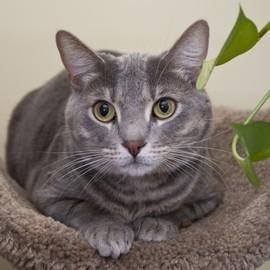 identify breed of cat
Question
Male cat 4 years ol
I recently adopted
identify breed of cat
Question
Male cat 4 years ol
I recently adopted
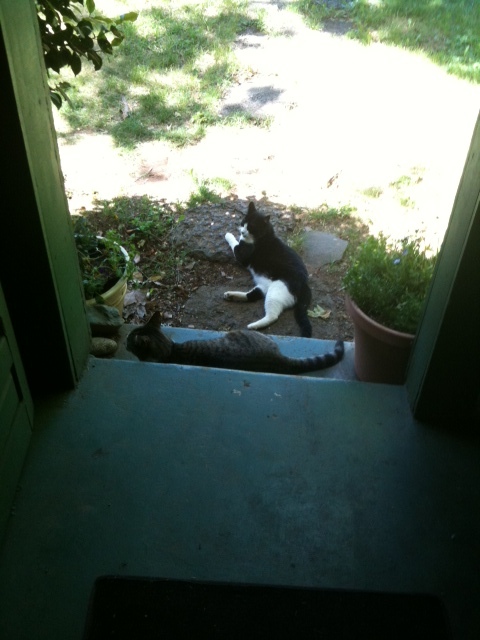 2 sibling cats. one of the brothers just passed.
Question
Their last day togethe
how should i dea
2 sibling cats. one of the brothers just passed.
Question
Their last day togethe
how should i dea
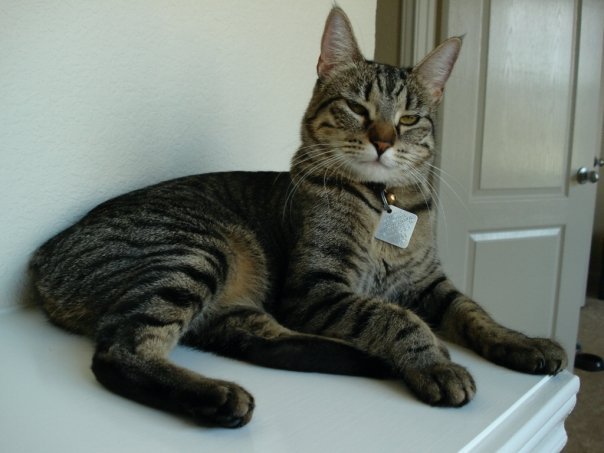 Reclusive kitten
QuestionMy cousin found an abandoned kitten and where s
Reclusive kitten
QuestionMy cousin found an abandoned kitten and where s
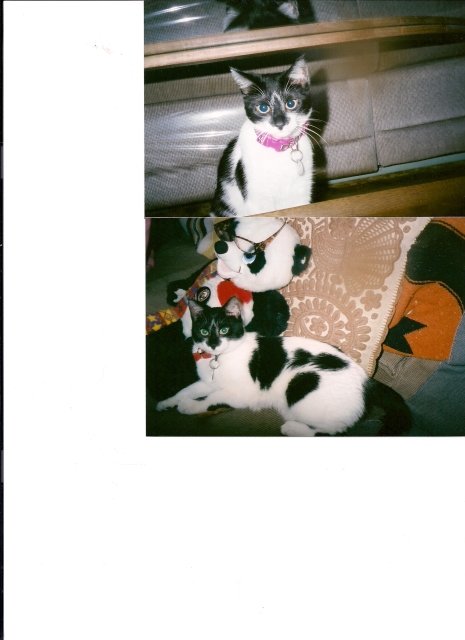 Recently Adopted Cat
Question
CREAM PUFF
Hello !
Hoping all is well.
Recently Adopted Cat
Question
CREAM PUFF
Hello !
Hoping all is well.
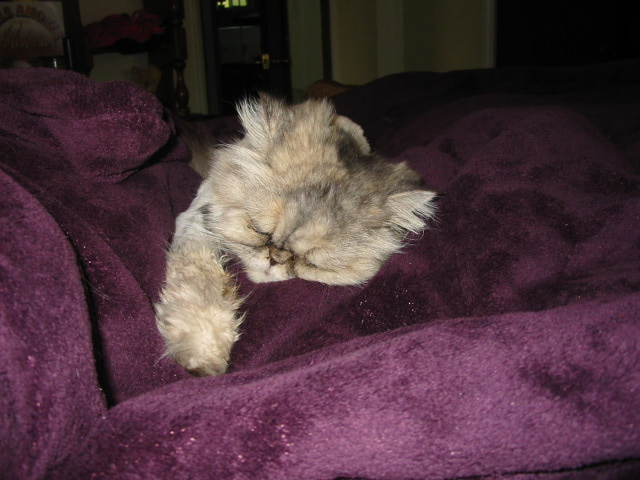 stuffy nose on my persian
QuestionTiffany
QUESTION: My cat Tiffany is 12 y
stuffy nose on my persian
QuestionTiffany
QUESTION: My cat Tiffany is 12 y